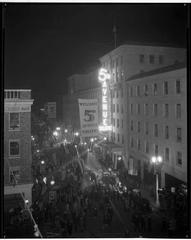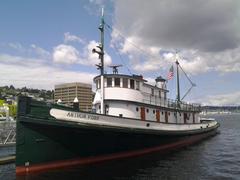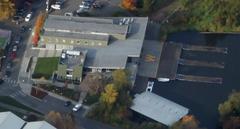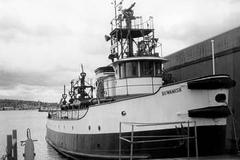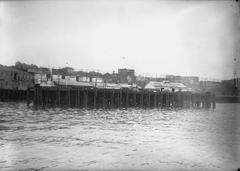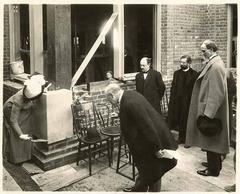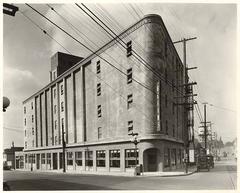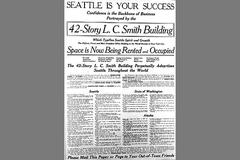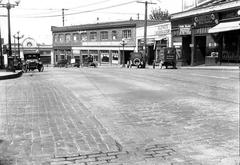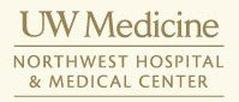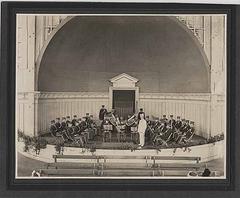
First Methodist Protestant Church Of Seattle
First Methodist Protestant Church of Seattle: Visiting Hours, Tickets, and Historical Guide
Date: 04/07/2025
Introduction
The First Methodist Protestant Church of Seattle is a cornerstone of the city’s spiritual, architectural, and civic evolution. Established in 1865 by Reverend Daniel Bagley, this historic congregation has left a lasting imprint on Seattle’s development, both through its architectural landmarks and its significant role in education, civic life, and social outreach (PCAD; HistoryLink). Over time, its buildings have become enduring symbols of the city’s heritage, reflecting both the resilience and the adaptability of Seattle’s communities.
This guide provides a comprehensive overview of the church’s history, architectural highlights, cultural significance, practical visitor information, and suggestions for exploring nearby attractions. Whether you are interested in Seattle’s religious history, appreciate Beaux Arts architecture, or are planning a visit to a landmark site, this article will help you make the most of your experience (Wikipedia - Methodist Protestant Church).
Table of Contents
- Introduction
- Historical Overview
- Architectural Highlights and Preservation
- Social and Cultural Significance
- Visiting Information
- Adaptive Reuse and Modern Legacy
- Key Dates and Notable Figures
- Frequently Asked Questions (FAQ)
- Visual and Media Resources
- References
Historical Overview
Early Foundations and the Methodist Movement
The First Methodist Protestant Church of Seattle was founded in 1865 by Reverend Daniel Bagley, a pioneering clergyman and civic leader. Bagley was instrumental in shaping both the city’s religious landscape and its educational system, notably helping to establish the Washington Territorial University (now the University of Washington) (PCAD). The congregation grew out of the national Methodist Protestant movement, which emphasized lay participation and congregational governance (Wikipedia - Methodist Protestant Church).
The church quickly became a community anchor, known for its inclusivity and active civic engagement. Its early members helped support social reforms, education, and charitable efforts, setting a precedent for future involvement in Seattle’s civic life.
Expansion and Community Building
By the late 19th and early 20th centuries, the church had established itself as a mother congregation, fostering new parishes in emerging neighborhoods like Ravenna. The “Little Brown Church on the Hill,” built in Ravenna in 1903, became a focal point for community gatherings and was notable for both its welcoming spirit and its panoramic views (HistoryLink). As the city grew, so did the church’s facilities, culminating in the construction of the grand Capitol Hill sanctuary in 1907.
Architectural Highlights and Preservation
Capitol Hill Sanctuary (1907)
Designed by James Schack and Daniel Huntington, the 1907 Capitol Hill church at 128 16th Avenue East is a striking example of Beaux Arts ecclesiastical architecture. Its notable features include:
- A brick and terra cotta façade
- An orange-tiled central dome
- A soaring 66-foot interior ceiling
- Stained glass windows and detailed woodwork (HistoryLink; PCAD)
The architectural significance of the building led to its designation as a Seattle Historic Landmark in 1976 and its listing on the National Register of Historic Places in 1993 (Seattle Landmarks Report).
The Sanctuary (Downtown)
The original downtown church sites, including the “Little Brown Church” and the later Fifth Avenue and Marion Street edifice, evolved alongside Seattle’s urban development. The 1908 building, now known as The Sanctuary, is renowned for its:
- Expansive auditorium and gallery
- 108 stained glass windows in both circular and Gothic forms
- Rich woodwork and terra cotta molding
- Fully equipped basement for community events (JTM Construction; Seattle Landmarks Report)
Preservation efforts in the late 20th century ensured the survival and adaptive reuse of this landmark. Today, The Sanctuary serves as a premier event venue, with its historic character meticulously restored.
Social and Cultural Significance
The First Methodist Protestant Church was a beacon of inclusivity, particularly notable for welcoming African Americans in the 19th century (Juicy Ecumenism). The congregation supported educational, charitable, and civic initiatives, acting as a hub for social action and dialogue.
The church’s openness to ecumenical partnerships—such as sharing facilities with other denominations—helped shape Seattle’s diverse religious landscape. Oral histories recall the church’s role as a gathering place for neighborhood children and a source of social support (HistoryLink).
Visiting Information
Visiting Hours and Tickets
Capitol Hill Church (128 16th Avenue East):
- Public Access: The historic building is privately owned and functions as office space; it is not open for daily tours or worship services.
- Special Events: Occasional public tours and events are organized by historical societies. Check with the Seattle Historic Preservation Office or affiliated organizations for current schedules.
- Admission: Most events are free; some may require advance tickets.
The Sanctuary (Downtown, Fifth Avenue and Marion Street):
- Event Venue: Open to the public only during scheduled events or guided tours. Visit The Sanctuary Official Website for event and ticket information.
Accessibility and Visitor Tips
- Wheelchair Access: Both buildings are wheelchair accessible; ramps and elevators are available.
- Photography: Permitted during public events and from sidewalks. The stained glass and terra cotta details make for excellent photography subjects.
- Visitor Etiquette: Respect the privacy of current tenants and avoid trespassing. Interior access is restricted unless attending a scheduled event or tour.
Nearby Attractions
- Volunteer Park: Home to the Seattle Asian Art Museum and Volunteer Park Conservatory.
- Capitol Hill Historic District: Features early 20th-century residences and churches.
- Downtown Historic Sites: Museums, theaters, and other religious landmarks are within walking distance.
Adaptive Reuse and Modern Legacy
Urban development and changing congregational needs have led to the adaptive reuse of the church’s historic buildings. The Capitol Hill sanctuary was renovated into office space in the early 1990s, while The Sanctuary downtown was restored as an event venue, blending modern amenities with historic preservation (JTM Construction).
These adaptive reuse projects demonstrate Seattle’s commitment to preserving its architectural heritage while accommodating contemporary urban life.
Key Dates and Notable Figures
Key Dates:
- 1865: Church founded by Rev. Daniel Bagley (PCAD).
- 1907: Capitol Hill sanctuary completed.
- 1908: Modern downtown church constructed.
- 1976: Designated a Seattle Historic Landmark.
- 1991–1993: Adaptive reuse renovations.
- 2012: Capitol Hill building occupied by Catalysis Corporation (PCAD).
Notable Figures:
- Rev. Daniel Bagley: Founding pastor and civic leader.
- James Schack and Daniel Huntington: Architects of the 1907 sanctuary (HistoryLink).
Frequently Asked Questions (FAQ)
Q: Can I tour the First Methodist Protestant Church buildings?
A: Regular tours are not offered, but special public events and historical society tours may be available. Check official websites for updates.
Q: Is there an admission fee?
A: Most public events are free; ticket requirements will be announced with scheduled events.
Q: Is the site wheelchair accessible?
A: Yes, both historic buildings are accessible.
Q: Can I take photographs?
A: Yes, exterior photography is encouraged; interior photography is allowed during public events.
Q: Where can I attend Methodist worship in Seattle?
A: The active First United Methodist Church at 180 Denny Way holds regular services (First Church Seattle).
Visual and Media Resources
- Exterior and interior photos highlighting the distinctive architecture, domes, and stained glass (Wikimedia Commons)
- Historical maps and drawings from the Pacific Coast Architecture Database (PCAD)
- Event and tour schedules from The Sanctuary Official Website
References
- First Methodist Protestant Church Seattle: A Historical Landmark and Visitor Guide to a Seattle Historical Site
- Visiting the First Methodist Protestant Church of Seattle: History, Architecture, and Local Heritage
- Visiting the Historic First Methodist Protestant Church in Seattle: Hours, Access, and Nearby Attractions
- Visiting The Sanctuary: Architectural History, Preservation, and Visitor Information for Seattle’s Historic First Methodist Protestant Church
- Seattle Landmarks Preservation Board Report
- Wikipedia - Methodist Protestant Church
- Seattle Architecture Foundation Tours
Final Recommendations
Although the historic First Methodist Protestant Church buildings are no longer used for regular worship, their enduring presence in Seattle’s urban landscape offers visitors a unique opportunity to connect with the city’s religious and architectural heritage. Enjoy the exteriors, participate in special events when available, and explore the surrounding neighborhoods to gain a deeper appreciation of Seattle’s dynamic history.
For up-to-date information on events, tours, and related historical sites, download the Audiala mobile app, subscribe to local heritage newsletters, and follow social media channels dedicated to Seattle’s history.


